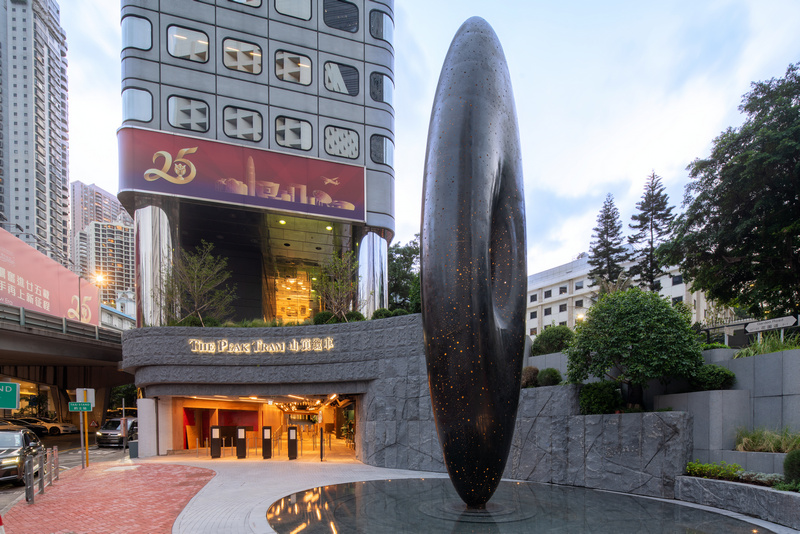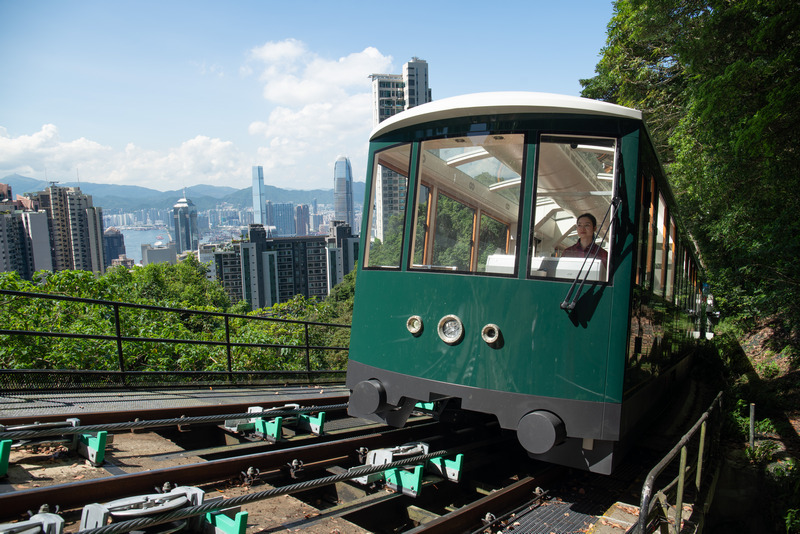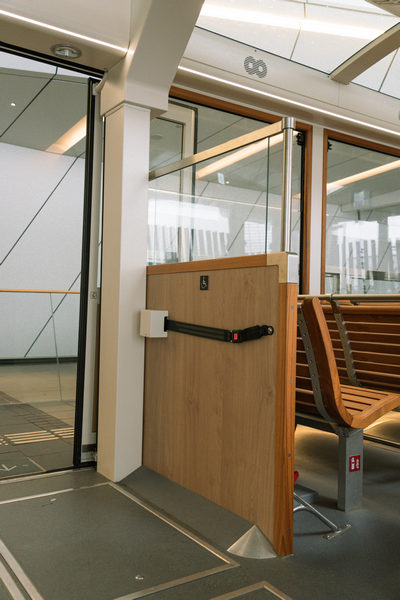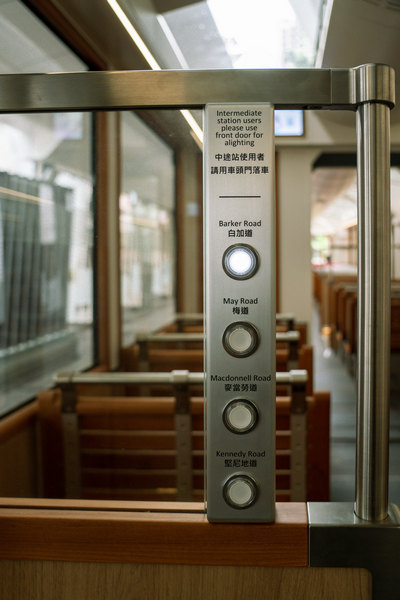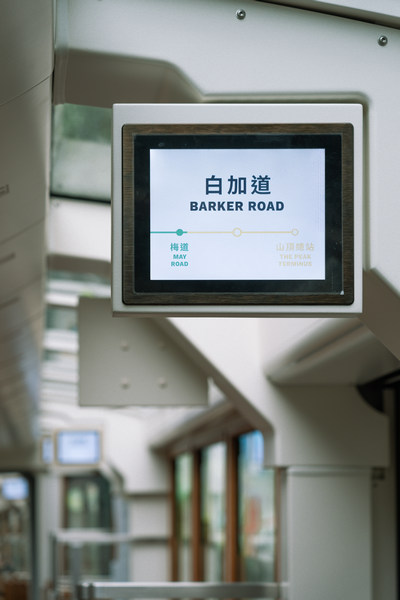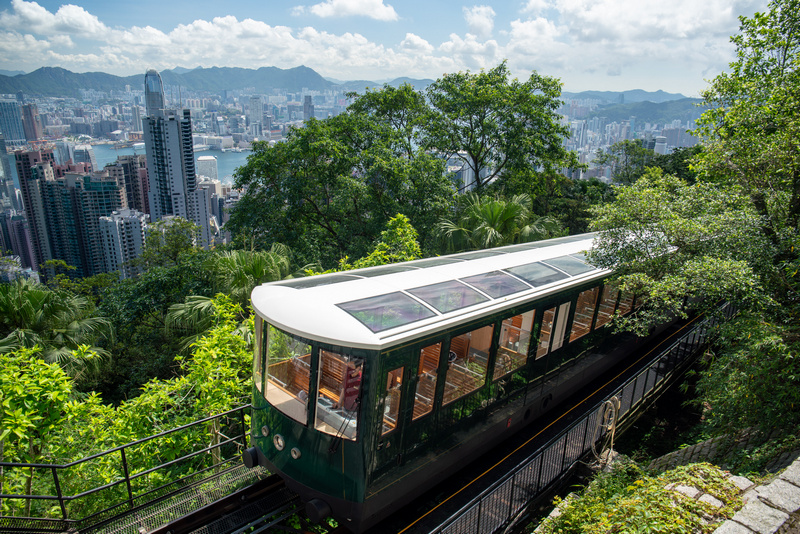The Peak Tram has proudly served Hong Kong for over 130 years and was successfully relaunched in 2022 after a substantial upgrade project. The project cost of more than HK$700 million was privately funded by The Hongkong and Shanghai Hotels Limited which owns and operates the Peak Tram under a renewable operating-right issued by the Hong Kong SAR Government.
The Peak Tram was previously upgraded in 1989, when the first two compartment, articulated, burgundy-coloured 5th generation tramcars were controlled for the first time by a microprocessor-driven system.
In the years that followed, it became one of Hong Kong’s most popular tourism attractions, with a patronage of more than 6 million per year from 2013-2018.
However, the increase in passenger numbers lead to increasing queues and waiting times, particularly at the lower terminus on Garden Road where waiting times could be over two hours at busy periods.
A capacity upgrade was essential
Peak Tramways started the upgrade project back in 2012, carrying out investigations and feasibility studies. In late 2015, the Government granted Peak Tramways the right to operate the Peak Tram until 2035, and the project was able to move into scheme and detailed design.
The consultant team was formed, and an inter-departmental working group was convened to discuss and advise on the various aspects and submissions that might be required. Back in 1989 the statutory process appears to have been far simpler than that faced by the 2016 team. It was perhaps the Peak Tram’s uniqueness that had made it an incredibly complex project, and this was also the case for the statutory approvals the project would require. For many of the submissions that would need to be made, there was no precedent.
The existing tramway varies in slope from four to 25.7 degrees, and a funicular railway by its very nature is designed to run up such a slope. For a project spanning over such a slope, there can be no fully compliant scheme for Barrierfree Access. The team carried out consultation with various stakeholder groups representing people with disabilities. As a result, the design was able to accommodate many well-received improvements from the 1989 version, including step-free access from the main entrance to the platforms, wider tramcar doors with roll-on / roll-off levels, dedicated vertical lifting platforms at the upper and lower terminus and a dedicated wheelchair entrance at the lower terminus.
There were also historical and heritage-related issues to accommodate, with declared monuments either side of the tramway adjacent to Tramway Path at the site of the new Lower Terminus Platform. Early discussions were held with AMO regarding the infrastructure of the Peak Tramway, and, during the construction period, the Barker Road Station structure was declared a Grade 1 Monument.
But perhaps the most significant statutory process was for the certification and approval of the tramcars, haulage and control systems. Since 1989 much had changed. The team made technical visits to some of the most recent funicular installations in Europe to determine what was possible and what features the new systems should employ, and EMSD were able to update the Code of Practice that governs the construction of the Peak Tramway taking account of the latest technological advances, safety features and regulatory aspects from Europe and North America.
The tramcars, haulage and control systems could then be designed and manufactured by the specialist Swiss contractors, but the new tramcars needed to be special. The Peak Tram team and their Tram Design Advisor worked with the Swiss contractors to create a modern-classic, with more glass, better views and finely detailed seating.
Extensive prototype testing was also undertaken on some of the new features of the Peak Tram. These included the comfort-cooling system that was installed for the first time. A full-scale prototype of a section of tramcar with five rows of seats was tested in Europe, to fine-tune the onboard ventilation system, and a separate prototype was built in Hong Kong for the bespoke automatic airvent docking device. The comfort-cooling system provides welcome relief for passengers during the hot summer months.
The downhill-facing seats are an extremely popular enhancement to the Peak Tram experience, and again, the Peak Tram team undertook extensive design, physical modelling and testing both in Europe, and in Hong Kong where two pairs of prototype seats were made. The Peak Tram would finish service around midnight, then the team would remove two rows of seats, bolt in the test seats, run full-speed tests with their designers, funicular experts, and client teams, to determine the best shape, pitch and angle for the fixed seats including footrests and handrails. Following these tests, the final seat configurations were designed and crafted in Switzerland.
The Upgrade project was carried out in two discrete phases. A First Suspension period in 2019 allowed the construction of a temporary platform some 70m uphill, along with the necessary adjustments to the track and controls, for the burgundy-coloured 5th generation tramcars to continue service. This allowed works to commence on the downhill track and building areas. Once the tramcars and equipment were ready for delivery, and the civil and building works were sufficiently advanced to receive them, the Second Suspension was commenced and the old tramcars, haulage and control systems were removed.
One notable new feature of the project was the new Main Entrance to the Central Terminus at Garden Road, and the Artwork. Commissioned by Peak Tramways, the Eye of Infinity was created by artist Lindy Lee and provides both a sense of place and a landmark entrance feature for the new Peak Tram.
Despite a significant effort to manage risk and look at ways of reducing downtime during the suspension periods, the continuing Covid-19 pandemic affected many aspects of the project. From factory closures and lockdowns in Europe that affected new tramcar and equipment delivery dates, to difficulties in getting building materials and systems from Chinese mainland factories into Hong Kong delaying the building works, combined with local effects on the workforce through isolation, infection and social distancing.
The Peak Tram Upgrade has significantly improved the passenger facilities and reduced passenger waiting times, through station and trackwork improvements and new, bespoke tramcars.
The Peak Tram upgrade project was unique in many aspects. The end result is a testament to the hard work, professionalism, flair and sheer perseverance of a great number of people, who formed the consultant, contractor, regulatory and client teams over the last 10 years. The new Peak Tram marks a significant milestone as an integral part of Hong Kong’s history, and is sure to remain a beloved icon for years to come.
For much of the project, the project team have been followed periodically by a film crew and key moments have been captured for a documentary that will be released later in 2023. Mark Lomas was Project Director for the Upgrade Project. Since the completion of the project, Mark has set up Gowan Projects, a bespoke PM advisory company.













